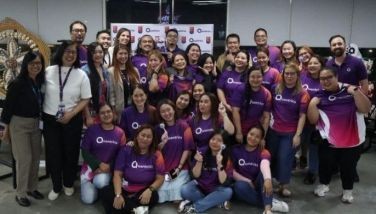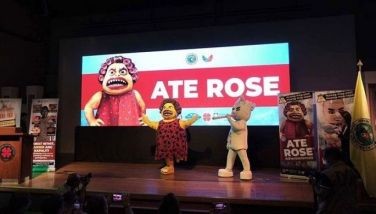Reviving Intramuros

Retired educator Consuelo Dancel-Sison, who is turning 94 this Jan. 27, remembers her childhood days as a resident of Intramuros, when school – Santa Isabel and then Santa Catalina – was just a short walk from home.
Lola Elong, now a widowed mother of 13, grandmother of 35 and great-grandma of five, heads The Friends of Intramuros, which is working to restore Manila’s Walled City to its old grandeur.
Now a resident of Quezon City where she was recognized as Outstanding Citizen in 2009, home for Lola Elong in the 1920s was a traditional house across San Agustin church in Intramuros, with narra flooring on the second floor and barandillas under the windows.
The youngest of nine children, Lola Elong is a native of Laoag, Ilocos Norte, where people know how to preserve heritage sites.
To give you an idea of what Intramuros was like in her youth, here are excerpts from Lola Elong’s article in Gaceta de Intramuros, published in 2008:
“I have memories of Intramuros and its moss-covered muralla (walls)… When I grew older, I was sent to buy our pan for the day at La Suiza and La Palma de Mallorca. I got dressed up for High Mass at San Agustin in my Sunday finery of ruffled organdy and straw hat with ribbons and artificial grapes. We went on paseos (strolls) to the Luneta on Sunday afternoons, with my sister properly chaperoned by cousins.
“I can still see the different old churches adorned with flowers and lit tapers during their festive novenas. To me, Santo Domingo in October was the most dazzling. A biased opinion because of my immersion with the Dominican sisters of Santa Catalina. But Lourdes Church in February was something else again. That small church on General Luna was always decorated with fresh white flowers and blue ribbons the color of Our Lady’s sash. I wore the habito (habit) to mass until the war broke out and my clothes got lost when the Japanese army invaded Albay.
“Even in the middle of the night, people could walk freely in the streets which were flushed clean from horse dung from the calesas (no noisy tricycles)…
“Drinking water was brought from artesian wells regularly and fresh fish and vegetables were bought from the lady vendor with her bilao filled with produce from the market across the Puente Colgante (now Quezon Bridge). Beside it was the huge fabrica de hielo (ice plant) with a serena (siren) which sounded at 7:00 a.m., 12:00 noon and 5:00 p.m.”
* * *
Last week Sison’s group sat down with Intramuros Administration head Marco Sardillas and representatives of the schools, Rotary Club and Tourism Council operating in the Walled City. Sardillas will be leaving the IA soon and is said to be eager to return to his farm in Iriga, Camarines Sur. But he can pass on the recommendations to his successor.
The group has enlisted the help of urban planner Felino Palafox Jr. to draw up a master plan for a restored Walled City.
A major hurdle in this undertaking is clearing the area of informal settlements. Sison is offering assistance on one crucial aspect: a viable resettlement site. This is a 13-hectare area in the valleys and hills overlooking Lingayen Gulf in San Fabian, Pangasinan. The land is owned by the family of Sison’s late husband, corporate lawyer and war veteran Domingo Sison of the University of the Philippines law class of 1949.
The owners are willing to part with the 13 hectares for 50 percent of the fair market price. The land is part of a 75-hectare estate along the highway between San Fabian and Damortis, La Union, connected to Baguio City through Rosario Road.
Palafox Architects is willing to develop the 13 hectares into a so-called garden city, and the rest of the estate into a residential-industrial complex.
Those who are relocated from Intramuros can find jobs in the beach resorts of San Fabian, which served as a base during World War II for Filipino and American liberation forces.
* * *
Squatter relocation requires strong political will. Manila Mayor Joseph Estrada, who has said he wants to leave the city much better than when he took over, may be willing to invest political capital in persuading his poor constituents to move to San Fabian.
The second hurdle is funding for development of the relocation site. Here the national government can step in with its socialized housing program.
Once the welfare of the informal settlers is taken care of, the revival of Intramuros can get underway in earnest. Educational institutions, offices and commercial establishments operating in Intramuros must do their share by keeping their surroundings clean and, ideally, embarking on beautification.
The Friends of Intramuros are asking the Manila Electric Co. for more street lamps to improve lighting and security in the Walled City.
Concerned authorities will have to pass regulations, in consultation with the National Historical Institute, to make architecture, landscaping and public works within Intramuros reflect the look and ambience of Old Manila.
The Friends of Intramuros want the area restored as “a worthy historic heritage for Filipinos.” Within the lifetime of Lola Elong Sison, perhaps the dream can become reality.
- Latest
- Trending
























